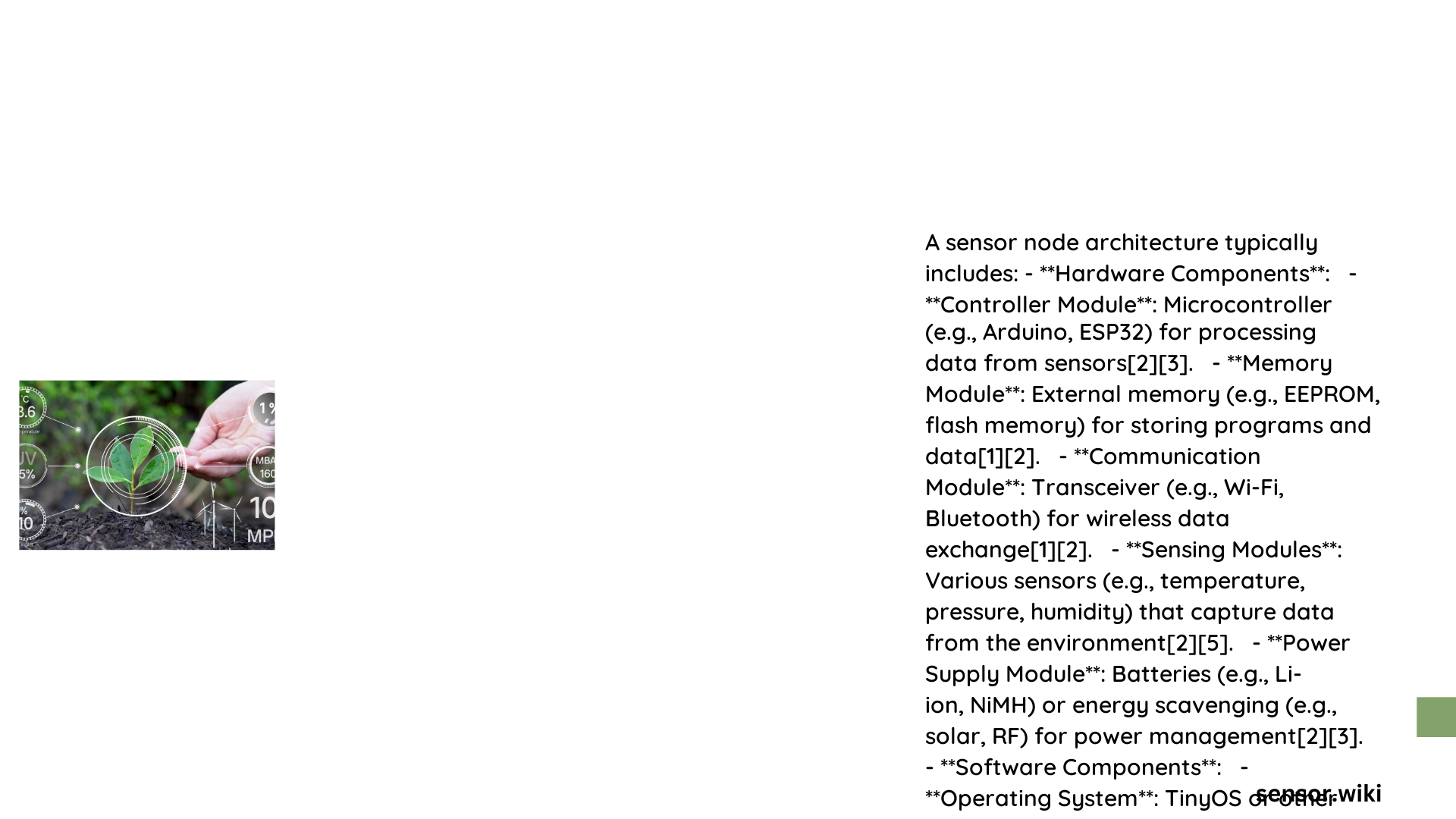Sensor node architecture represents a sophisticated ecosystem of interconnected hardware and software components designed to collect, process, and transmit environmental data efficiently. These compact intelligent systems integrate microcontrollers, specialized sensors, communication interfaces, and energy management strategies to enable robust and adaptive sensing capabilities across diverse applications ranging from environmental monitoring to industrial automation.
What Makes Sensor Node Architecture Unique?
Core Hardware Components of Sensor Nodes
Sensor nodes are intricate systems comprising multiple critical hardware elements:
| Component | Key Characteristics | Typical Specifications |
|---|---|---|
| Microcontroller | Central Processing Unit | 8-32 bit, 16-256 MHz |
| Memory | Program & Data Storage | 4-256 KB Flash, 2-64 KB RAM |
| Power Management | Energy Efficiency | Battery or Energy Harvesting |
| Communication Module | Wireless Transmission | Zigbee, LoRaWAN, Bluetooth Low Energy |
Microcontroller Selection Criteria
When selecting microcontrollers for sensor nodes, engineers consider multiple factors:
- Processing Power: Typically ARM Cortex-M series
- Energy Efficiency: Low static current (1-2 mA)
- Computational Capabilities: Support for signal processing algorithms
- Interface Compatibility: Multiple communication protocols
Software Architecture Fundamentals
Operating System Requirements
Sensor node software must be lightweight and energy-efficient. Popular operating systems include:
- Contiki OS
- Extremely low memory footprint
- Built-in networking stack
-
Dynamic module loading
-
TinyOS
- Component-based architecture
- Optimized for resource-constrained devices
- Event-driven programming model
Communication Protocol Strategies
Wireless Transmission Technologies
Different wireless technologies offer unique advantages:
- Zigbee
- Low power consumption
- Mesh network capabilities
-
Short to medium-range communication
-
LoRaWAN
- Long-range transmission
- Extremely low power requirements
- Suitable for wide area networks
Power Management Techniques
Effective power management is crucial for sensor node longevity:
- Dynamic Voltage Scaling
- Sleep Mode Optimization
- Energy Harvesting Integration
Sensor Interface Mechanisms
Signal Conditioning and Processing
Sensor nodes employ various interface techniques:
- Analog-to-Digital Conversion
- Digital Signal Processing
- Calibration Algorithms
Performance Optimization Strategies
Design Considerations
- Minimize computational overhead
- Implement efficient data compression
- Use adaptive sampling rates
- Integrate error correction mechanisms
Real-World Application Scenarios
Sensor node architectures find applications in:
- Environmental monitoring
- Industrial automation
- Healthcare systems
- Smart agriculture
- Urban infrastructure management
Conclusion

Sensor node architecture represents a complex interplay between hardware efficiency and software intelligence, enabling sophisticated data collection and transmission across diverse domains.
